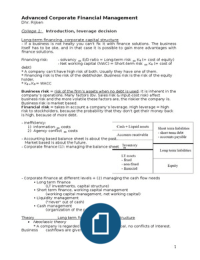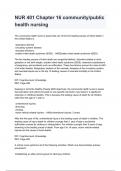Samenvatting
Samenvatting Advanced Corporate Financial Management colleges
- Instelling
- Vrije Universiteit Amsterdam (VU)
- Boek
- Finance
Samenvatting van Advanced Corporate Financial Management van alle colleges, collegesheets en deel van de literatuur. Docent: H. Rijken. Opleiding: Master Business Administration - Financial Management. Summary of Advanced Corporate Financial Management.
[Meer zien]






